Quick Links
South of Midnight has its roots deep in Southern U.S. folklore, Creole culture, and the mythologies and folk tales of the deep South swamps. From Bottle Trees to the tragic tale of Benjy, every corner of the game is rife with references to myths and traditional stories of the South, and nowhere is that more evident than the game’s numerous creatures and bosses.

Related
South of Midnight Achievement Guide
To get all 40 South of Midnight achievements, be prepared to replay Chapters to complete some of the hardest challenges in the game.
From the moment you first pick up the Weaver hooks to the closing moments of the game, South of Midnight takes inspiration from creatures of real-life folklore to bring these cryptids, spirits, and other figures to life. Some South of Midnight references are well known outside of the deep South, like the story of a dealmaking Devil at the Crossroads. But many creatures are inspired by lesser-known cryptids and creatures only Southern people would recognize, like the Honey Island Swamp Monster or the Loch Ness Monster-like Altamaha-ha.
1
Haints
Malevolent Spirits Of The South
- Haints can be encountered throughout the game in almost every combat arena
One of the mythological creatures South of Midnight players will encounter first are Haints, represented in-game as a horrifying enemy made up of Stigma. In real-life Southern folklore, a Haint is a kind of unruly spirit that can’t move on to the next life, and is typically represented as ghostly blue in color.
The word Haint is a Gullah dialectical variation of the word Haunt.
In South of Midnight, Haints aren’t blue (unless Crouton has control of one), but they are described along these same lines. Stigma is a kind of corruption that spreads from those who can’t let go of the past, or are haunted by it, which manifests in various forms of Haints in South of Midnight. As you finish each combat arena, Hazel will be able to unravel the knot of Stigma, and often, this will reveal more of the story behind why Stigma and Haints appeared in this location.
2
Two-Toed Tom
A Gargantuan, Gluttonous ‘Gator
- Two-Toed Tom can be encountered in chapters 4 and 5
The first major boss in South of Midnight is Two-Toed Tom, an enormous alligator that consumes everything in its path. As you explore the pig farm and swamp areas in chapters 4 and 5, you will slowly unravel the story behind how Two-Toed Tom became so enormous. As it turns out, he used to be owned by an abusive master who denied him food except when the master rang a bell.
His owner also abused Jolene when she was younger, herself a reference to Dolly Parton’s “Jolene” – did you notice her flowing locks of auburn hair and eyes of emerald green? After she had enough, Jolene used the sound of the bell to get Two-Toed Tom to kill him. Two-Toed Tom then fled and found the pig farm, where he gorged on all the meat he could eat after being starved for so long. Over time, Two-Toed Tom’s hunger grew to unsatiable levels, and he, in turn, grew to legendary size.
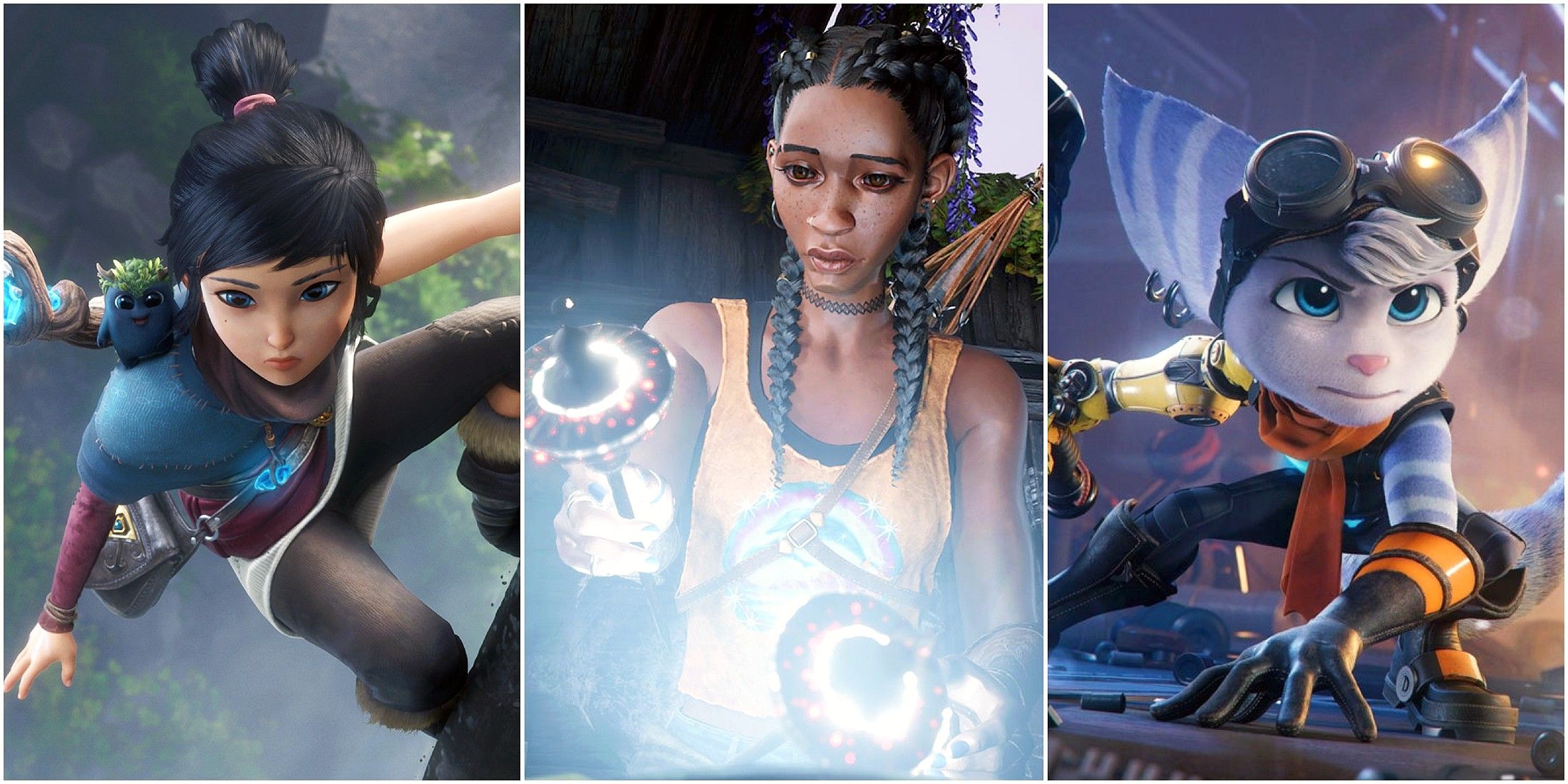
Related
7 Best Games To Play If You Like South Of Midnight
These story-driven action-adventure games provide focused and memorable experiences that can be finished in just a few evenings.
Two-Toed Tom is a well-known cryptid in Southern folklore. He is described as an enormous alligator with a hefty appetite for destruction and is typically represented as inherently evil, not a regular gator. Though the in-game representation of Two-Toed Tom doesn’t explain why he has that name (it’s usually thought to be because of a steel trap, or previous attempts to kill him), South of Midnight‘s first boss is an impressive take on one of the most legendary southern mythological creatures.
3
The Rougarou
Like a Werewolf, Now With More Feathers
- The Rougarou can be encountered in chapters 6 and 7
The Rougarou is a legendary beast in Cajun folklore that is essentially a werewolf – traditionally, the Rougarou is described as a half-beast, half-man that can shapeshift between both human and animal forms. In South of Midnight, the Rougarou is a beast you will encounter in the sixth and seventh chapters, though the game’s take on this shapeshifting mythological creature is different than almost every other representation of the Rougarou.
By the time you reach the end of chapter 6 and 7, you will meet someone who is keeping a secret: they are a Rougarou, but they struggle to control the inner beast. Eventually, he transforms into an enormous, multicolored owl-like creature – a stark departure from the typical wolf-like creature that the myth of the Rougarou is traditionally associated with. Still, it’s an eye-catching take on the Rougarou, and the songs that play throughout the Rougarou-associated areas are among the best songs in South of Midnight.
4
Huggin’ Molly
The Boogeyman of Alabama Folklore
- Huggin’ Molly can be encountered in chapter 1, and chapters 8 and 9
Huggin’ Molly is something like the boogeyman, a mythological creature in Alabama folklore that parents would warn their children about to keep them inside at night. Traditionally, Huggin’ Molly is described as the ghost of a woman who only appears to children at night, wearing a black dress and a wide-brimmed black hat. If she catches a kid out of the house after dark, she will grab them and scream at them.
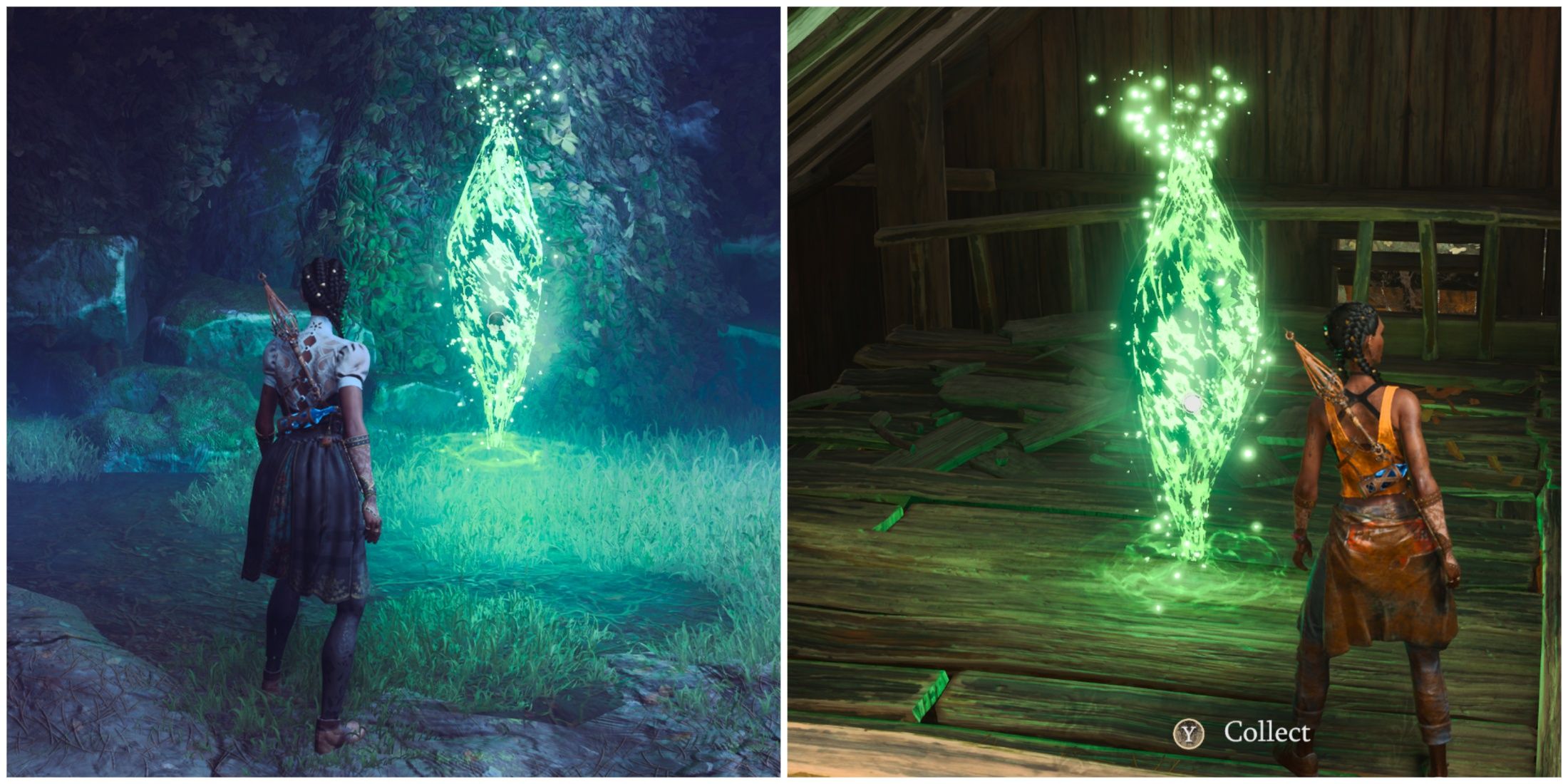
Related
South of Midnight: Health Filament Upgrade Locations
There are nine Heart Filaments that players can collect to increase Hazel’s maximum health in South of Midnight – here’s where to find them.
Some versions of Huggin’ Molly describe her perhaps as a kind of Haint, the spectre of a grieving mother that can’t move on from this world to the next, while others say she was a teacher in life. Whatever she is, Huggin’ Molly has also been associated with keeping kids safe, and is described in both positive and scary ways.
In South of Midnight, you will see Huggin’ Molly briefly in chapter 1, then again in chapters 8 and 9 as you descend into her lair to find Hazel’s mom. In-game, Huggin’ Molly is represented as an enormous, terrifying half-spider, half-woman that leaves red yawn wherever she goes, a very unique and artistic take on the traditional woman-in-black description of this cryptid. She isn’t all bad, though, as Hazel discovers during chapter 9.
5
Honey Island Swamp Monster
- The Honey Island Swamp Monster can be encountered in chapters 10 and 11
Like Huggin’ Molly, the Honey Island Swamp Monster is a mythological creature with similarities to well-known cryptids, in this case, Bigfoot. Also called the Cajun Sasquatch and tied to Louisiana folklore, the Honey Island Swamp Monster is described as a gigantic, hairy, part-humanoid, part-primate creature with big feet, a pungent odor, and red eyes.
Originally “sighted” in the mid-1900s, the Cajun Sasquatch is represented in South of Midnight by Honey, the Swamp Thing creature you encounter in the swamp after you finish chapter 9. In-game, Honey is a huge childlike creature that Hazel must play with, and tries to protect as she escapes from the swamp.
The Honey Island Swamp Monster isn’t necessarily described as childlike, nor does it seem like there are any stories about it being a child that was changed by the swamp. But the South of Midnight take on this creature winds up being a cute, loveable, and ultimately tragic character that Hazel chooses to help after receiving guidance from Mahalia. Its large size, big feet, and swampy appearance just about fits the description of the Honey Island Swamp Monster, minus its association with the Altamaha-ha.
6
The Altamaha-ha
The Georgian Mermaid, Now With A Backstory
- The Altamah-ha can be encountered in chapters 10 and 11
Throughout the swamps of chapters 10 and 11, Hazel will slowly uncover the story of how Honey came to be the way it is. As it turns out, Honey was once a baby whose mother, Ayotunde, desperately tried to escape capture by jumping from a pleasure boat. She lost her baby on the way down, who was rescued by the swamp, but she didn’t realize her child was safe nearby.
She frantically searched and searched, and in her desperation, let out a shriek and turned into the Altamaha-ha – a creature inspired by Georgia folklore that is traditionally something like a swamp mermaid, or the Southern U.S. version of the Loch Ness monster. In-game, Ayotunde is shown to turn into the Altamaha-ha, take her revenge, then search for her baby for the rest of her days, hysterically digging into every corner of the swamp to find her lost baby.

Related
South of Midnight: How To Get More Floofs
To get more Floofs, South of Midnight players must go out of their way to find secret Floof locations, Tin Flips, and Stigma to unravel.
In real-life folklore, the Altamaha-ha is described as a hissing, incredibly long half-serpent half-fish creature that lives in the Altamaha river. The South of Midnight take on the Altamaha-ha legend depicts it as being a creature born out of furious desperation, and as a beautifully colorful, finned, lizard-like creature. As she tries to escape the swamp, Hazel unknowingly helps Ayotunde – the Altamaha-ha – reunite with her baby, Honey, throughout chapter 11.
7
The Crossroads & The Devil
The Devil Went Down To The Town In The Tapestry
- Can be encountered in Chapter 12
Though Roux himself doesn’t have a direct inspiration in Southern folklore, his characterization and purpose in the game’s story are quite close to the legendary tale of the Devil at the Crossroads. A staple of Southern Blues and a foundational story of Hoodoo culture, the Crossroads is described as a place between life and death that is typically found where paths intertwine like the paths of fate – like a crossroads.
It’s said that if you go to the Crossroads, you may find the Devil there, ready to make a deal in exchange for your soul.
In South of Midnight, Roux is depicted as the right-hand man to Kooshman, the King of Nightmares and Dreams, and the final boss of the game. He is a kind of psychopomp, like the Ferryman, who whisks souls to the Town in the Tapestry so Kooshma can feed on the regrets and other emotions its inhabitants refuse to let go.
But despite such negative associations, Roux is not necessarily depicted as evil. In fact, the Devil is usually depicted as a suave, savvy, intelligent being in Cajun folklore, and Roux is about as smooth as they come. In the end, Roux does help Hazel find her mom in exchange for her services to tame Kooshma’s hunger – and ultimately, we learn that the Town in the Tapestry is not the worst place to be if you can’t (or won’t) let go of the past.
8
Kooshma
A Malevolent Spirit That Haunts Your Nightmares
- Can be encountered in chapters 12 and 13
Sometimes called Cauchemar, Kooshma is an enigmatic character with many variations in the mythology and folklore in Cajun culture. In most depictions, Kooshma is described as a female spirit that invades your nightmares and holds you down while you sleep. It’s commonly thought that this comes from the phenomenon of sleep paralysis, a real-life condition that causes the nightmarish sensation of being trapped and immobile inside one’s own body while something malign watches or actively disturbs. It’s uncommon, but it tends to happen upon waking up to those who suffer from sleep paralysis.
In South of Midnight, Kooshma is represented as the King of Nightmares, a malevolent entity that hungers for the raw, knotted emotions of those who can’t move on from the past. Roux serves Kooshma as a kind of ferryman for souls that suffered greatly in life, but he recognizes that Kooshma’s hunger has grown beyond normal and seeks to temper it.
You will encounter Kooshma several times throughout the game during the Bottle Tree chase sequences, but Hazel doesn’t come face-to-face with the King of Nightmares during chapter 13. It’s a scary depiction of the Cajun nightmare demon, and being the lord of a realm for souls trapped by regret makes a lot of sense for a creature so heavily associated with sleep paralysis.
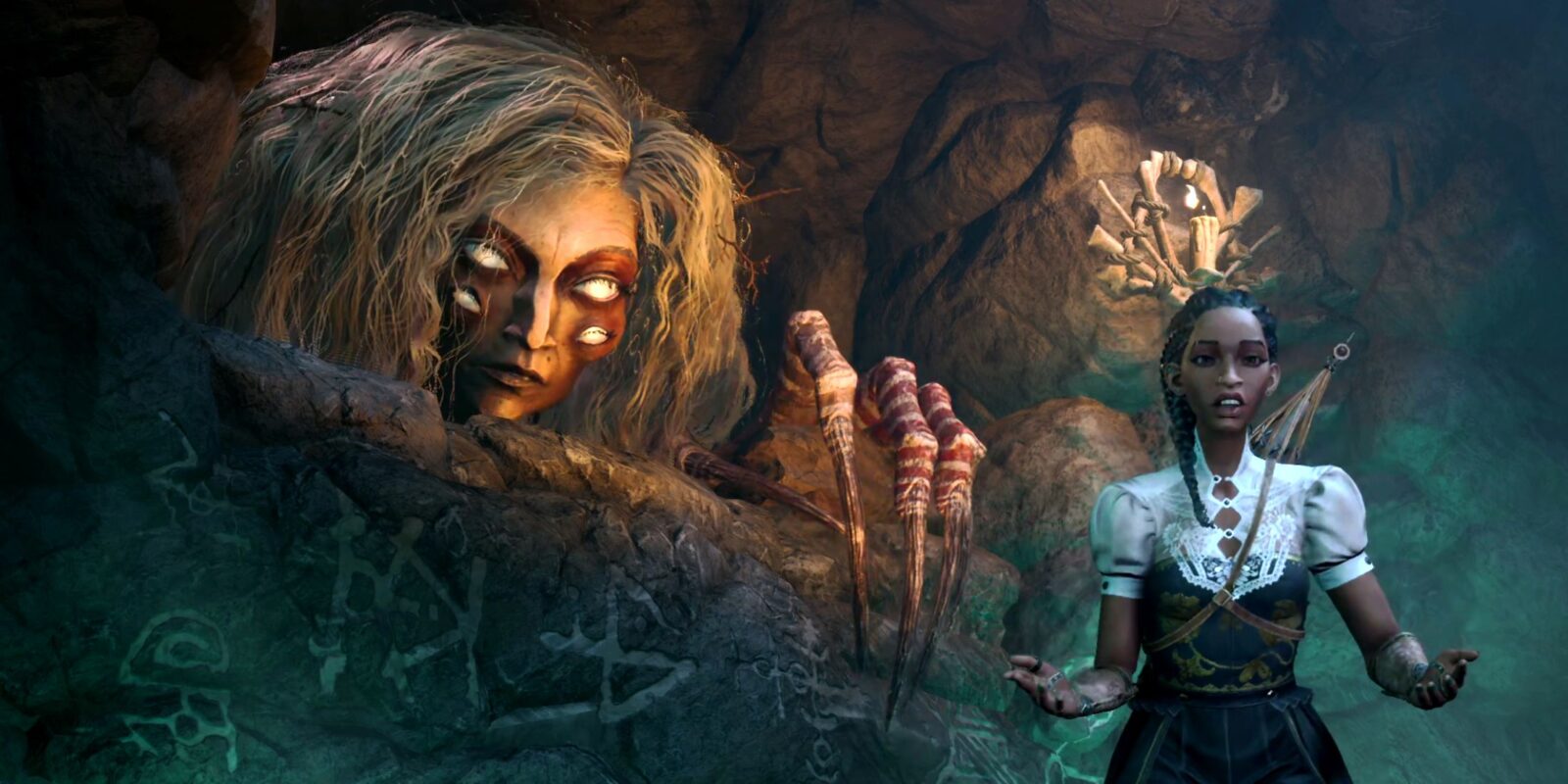
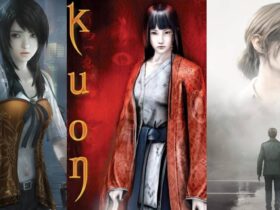

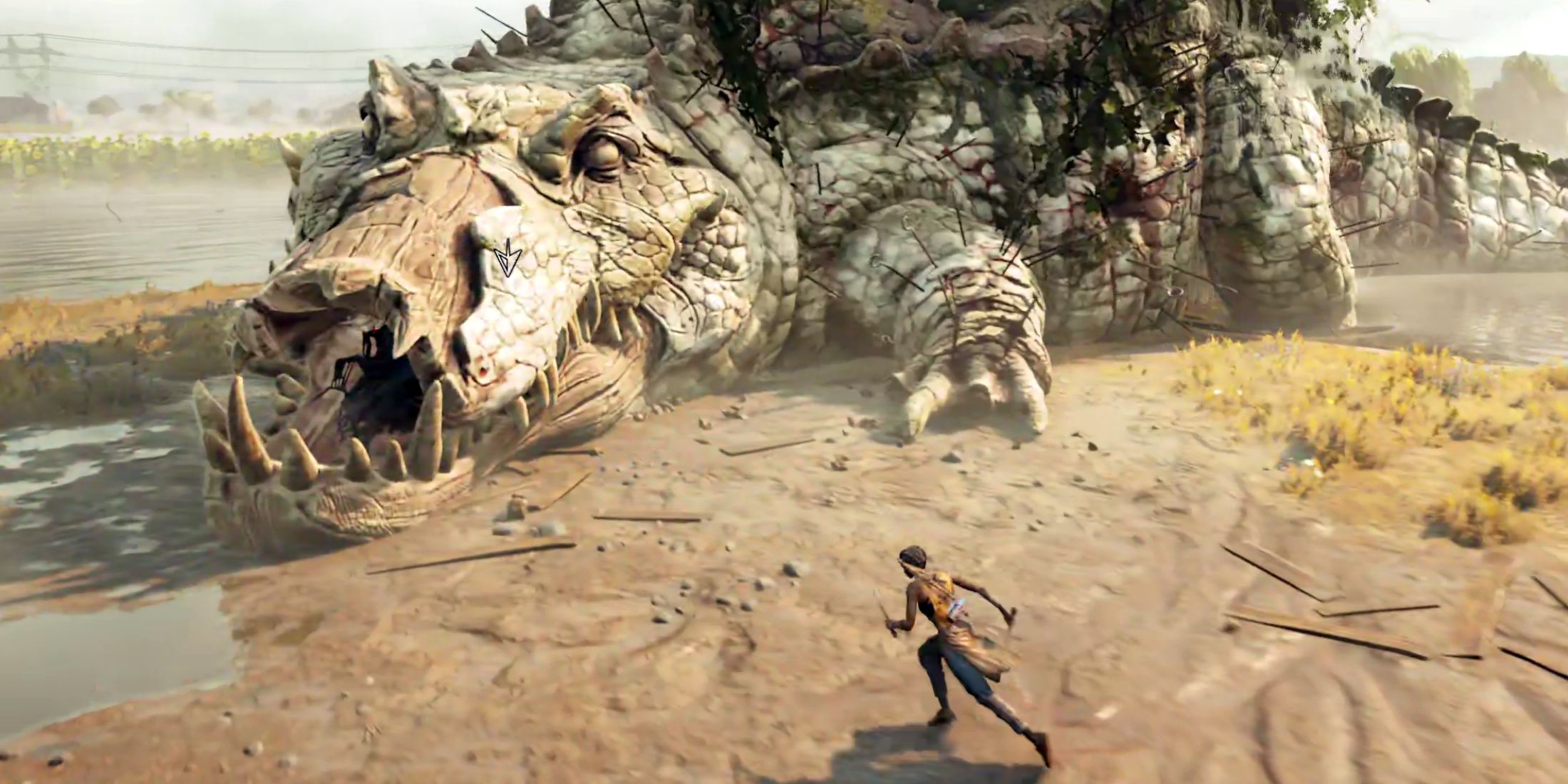

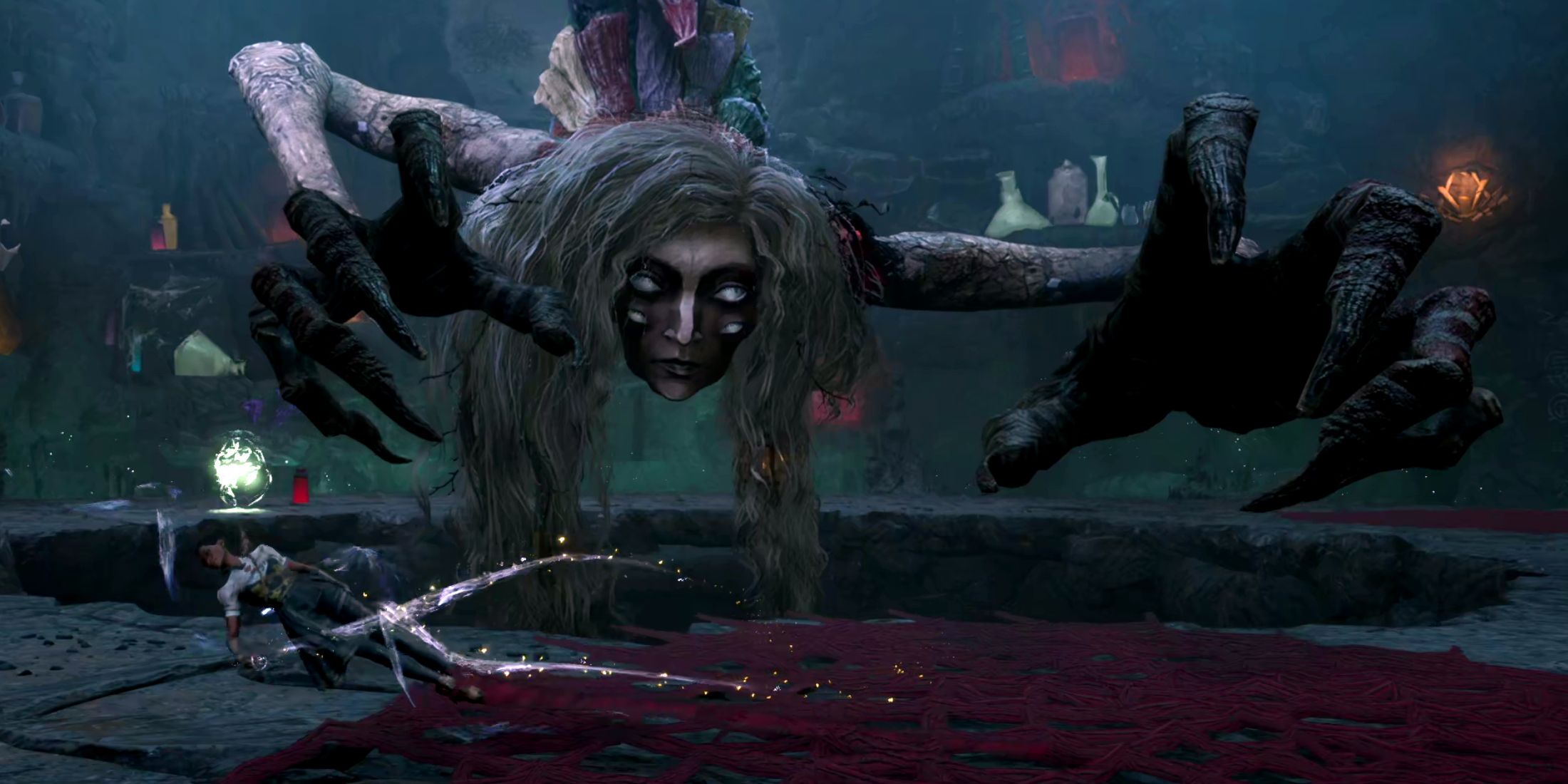

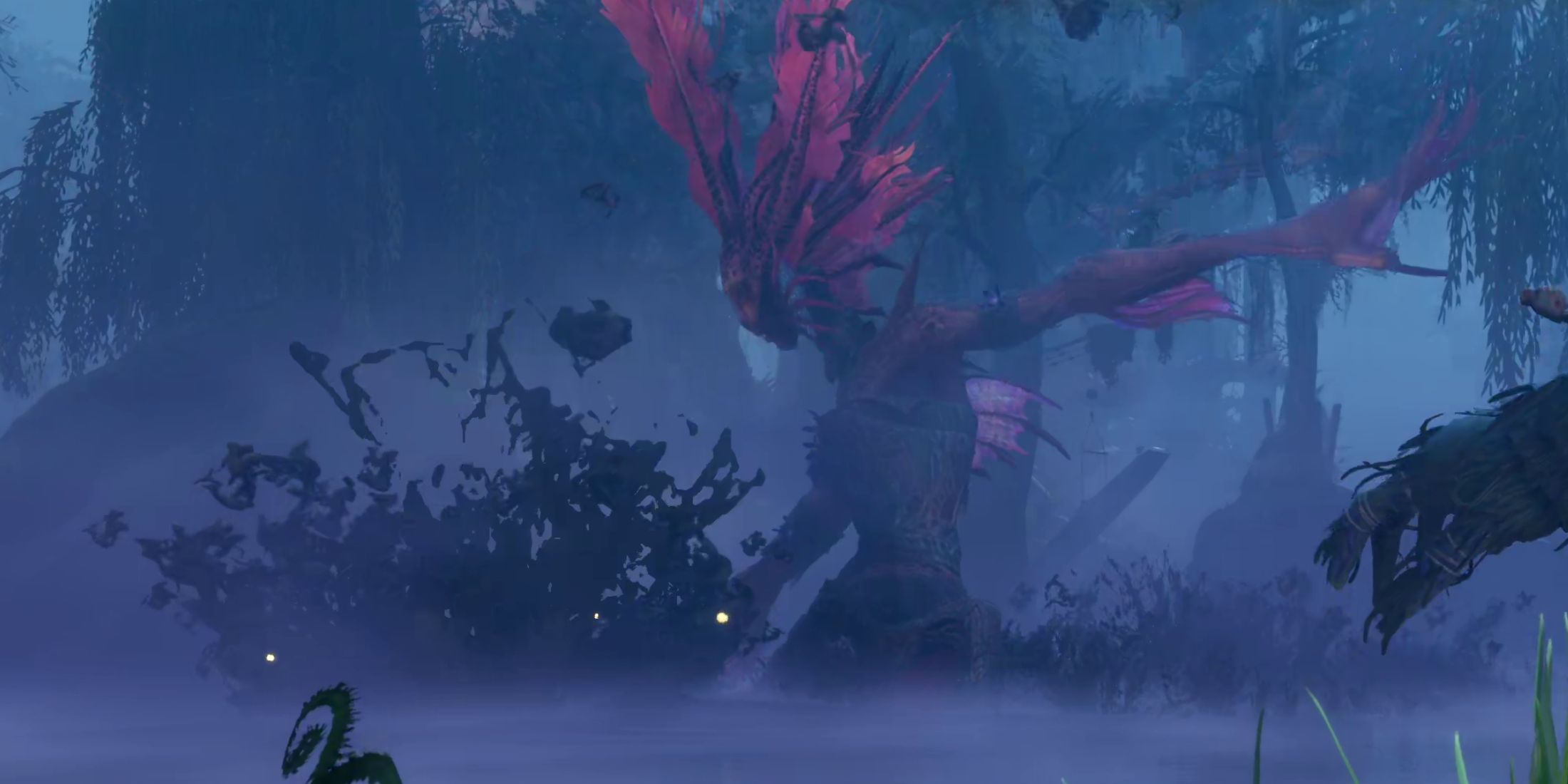
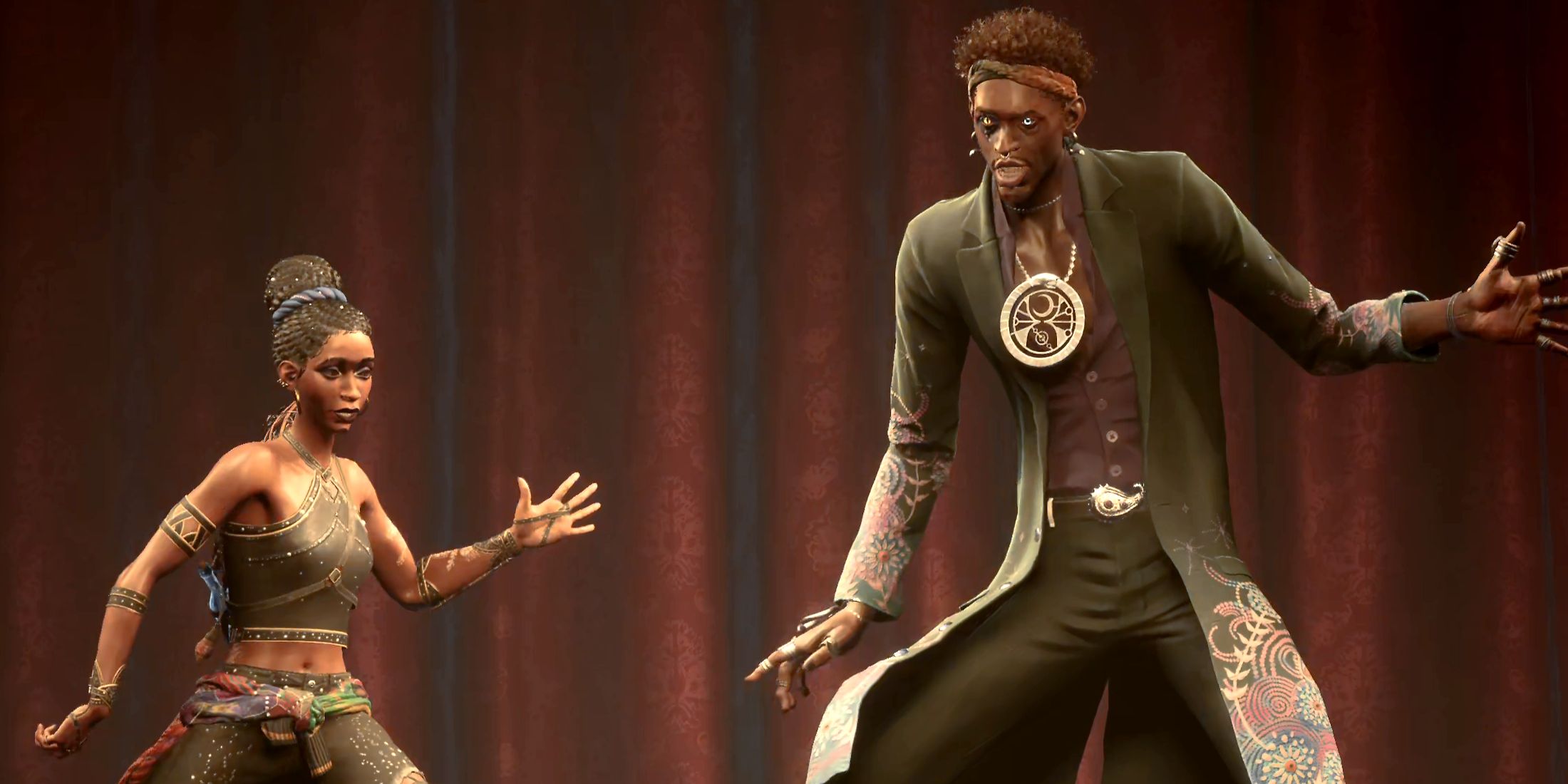
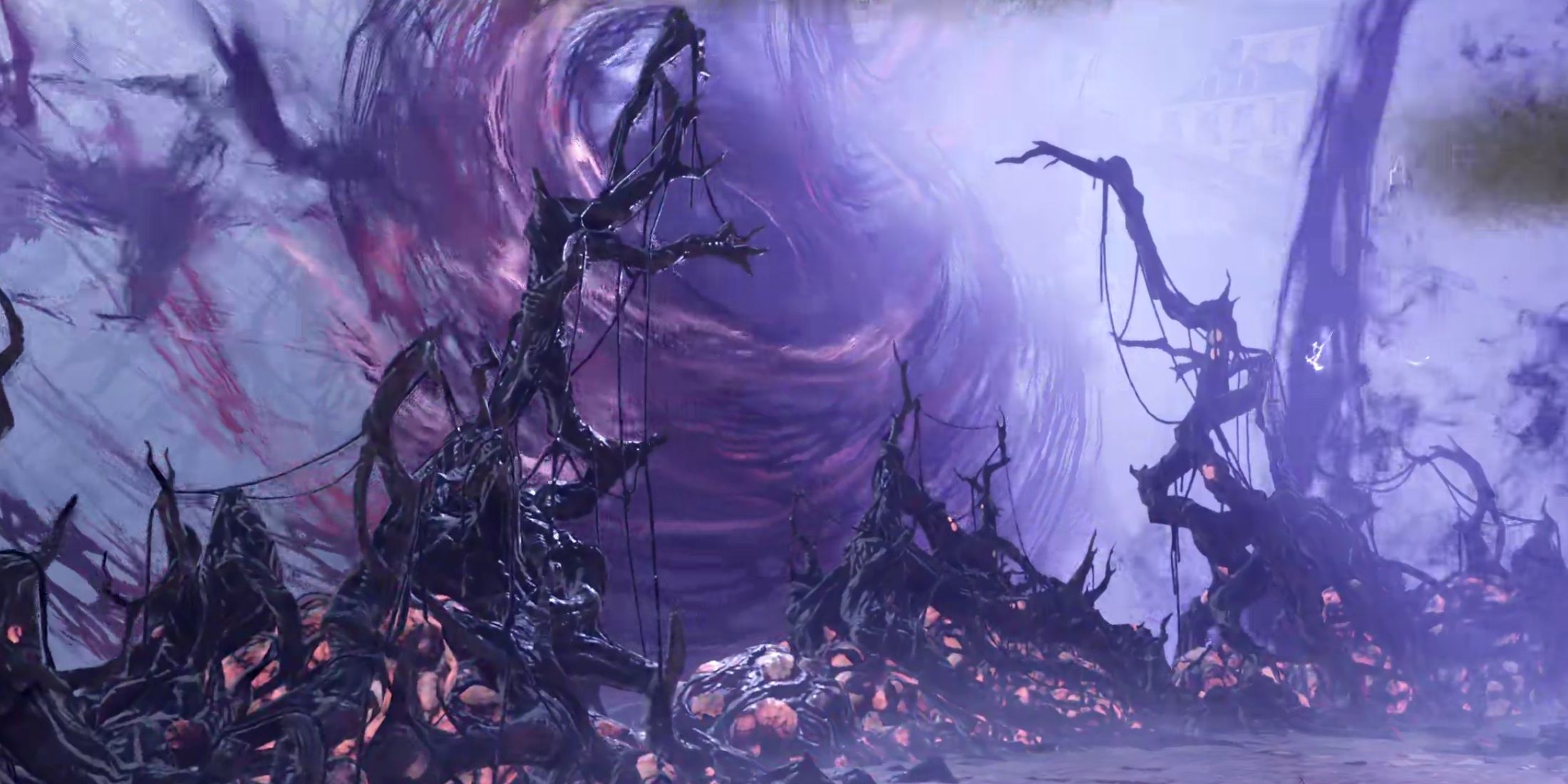







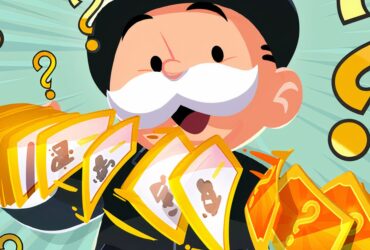

Leave a Reply